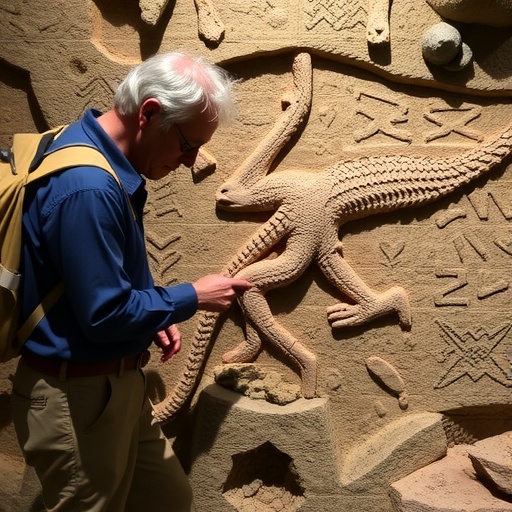For the first time, researchers have confirmed that the functional diversity of marine ecosystems can be reliably deduced from fossil records, a breakthrough that promises to reshape conservation strategies worldwide. Leveraging specimens collected off the coast of North Carolina, this pioneering work demonstrates that despite the inherent incompleteness of the fossil record, it preserves crucial ecological functions over millennia, allowing scientists to reconstruct the dynamics of ancient ecosystems with unprecedented confidence.
Functional diversity—the variety of ecological roles and processes within an ecosystem—provides deeper insights into ecosystem health than mere species counts. It captures how biological communities operate, how species interactions maintain ecosystem resilience, and how crucial processes such as nutrient cycling or energy flow persist over time. Until now, paleontologists and conservation biologists faced skepticism about whether fossil assemblages, often fragmentary and biased, could faithfully represent these complex functions.
The study’s lead paleontologist, Carrie Tyler, has spent years delving into the challenges of interpreting fossil food webs, which are notoriously incomplete due to gaps in preservation and temporal resolution. Collaborating closely with Michal Kowalewski, the Thompson Chair of Invertebrate Paleontology at the Florida Museum of Natural History, Tyler assembled an extraordinary dataset comprising over 60,000 specimens from 52 diverse locations within Onslow Bay, North Carolina. These efforts provided a rare empirical bridge between living ecosystems and their fossilized counterparts, enabling a rigorous test of functional diversity preservation.
Central to their success was the concept of functional redundancy, where multiple species perform overlapping ecological roles. This phenomenon mitigates the impact of fossil record bias, as the absence of one species is often compensated by the presence of others fulfilling the same functions. For example, burrowing marine worms and echinoderms like sea biscuits both contribute to sediment oxygenation, a critical process for nutrient cycling. Such redundancy ensures that key ecosystem functions leave a trace in the fossil record even when individual species are missing.
The researchers meticulously categorized each organism based on its ecological role, analyzing both living populations and the fossil assemblages collected from the same locations. Although the absolute numbers of individual species differed—some soft-bodied worms had lower fossil representation compared to living counts—the overall functional diversity metrics aligned strikingly well between the two datasets. This confirmed that the fundamental architecture of ecological functions preserves itself over geological timescales despite species-level variation.
This revelation has profound implications for conservation paleobiology, an emerging field that applies insights from ancient ecosystems to protect and restore modern biodiversity. By establishing that functional diversity can be reliably inferred from fossils, scientists gain a powerful tool to benchmark contemporary ecosystem health against historical baselines unaffected by recent human activities. This enables more precise identification of lost functions and targets for ecological restoration efforts.
Historically, paleontology’s role was limited to understanding extinction and life’s past diversity, but the accelerating Anthropocene extinction crisis has spurred a paradigm shift. Conservationists now recognize that ancient ecosystem reconstructions can guide the preservation of biodiversity and ecosystem services threatened by habitat destruction, climate change, and invasive species. The study thus integrates paleontology with applied ecology, forming a vital link between past and present biodiversity challenges.
Technical challenges remain, however. Soft-bodied organisms fossilize poorly, and taphonomic biases complicate fossil assemblage interpretations. Yet, by focusing on taxa like mollusks, which fossilize abundantly and reliably, researchers extrapolate ecosystem-wide patterns. Mollusks emerge as sentinel taxa whose diversity reflects broader ecological conditions. Complemented by corroborating evidence from other taxa, these findings lay a robust foundation for paleontological contributions to environmental management.
The study also highlights the resilience inherent in ecological networks, maintained through overlapping functions across species. Such stability mechanisms are crucial under current environmental pressures. Understanding functional redundancy in ancient contexts informs how ecosystems can absorb shocks and which functions are most vulnerable, offering practical guidance for biodiversity conservation and ecosystem restoration strategies.
Despite these advances, the authors caution that broader testing is essential. This initial study, while groundbreaking, represents a single ecosystem in a relatively protected marine environment. Diverse environments and ecosystems—ranging from terrestrial to deep-sea habitats—require similar validation efforts. Expanding this research will strengthen our confidence in fossil-based functional assessments and broaden its applicability across the globe.
In conclusion, the fusion of paleontology with modern conservation science, exemplified by this research, heralds a new era in ecosystem restoration and management. By decoding the ecological roles archived in fossil records, scientists can illuminate the pathways to healthier, more resilient environments. The promise of uncovering lost functions and guiding restoration efforts through the lens of deep time is a transformative development amidst the urgency of the biodiversity crisis.
This landmark study was published in the Proceedings of the National Academy of Sciences and stands as a testament to innovative interdisciplinary collaboration, leveraging centuries-old remains to chart a sustainable future for marine ecosystems.
Subject of Research: Functional diversity preservation in marine fossil records and implications for conservation paleobiology.
Article Title: Fossil samples archive functional diversity in marine ecosystems: An empirical test from a present-day coastal environment
News Publication Date: 28-Jul-2025
Web References:
- DOI: http://dx.doi.org/10.1073/pnas.2405727122
- Florida Museum of Natural History marine fossil research pages referenced in study
References:
- Tyler, C., Kowalewski, M. (2025). Fossil samples archive functional diversity in marine ecosystems: An empirical test from a present-day coastal environment. Proceedings of the National Academy of Sciences. DOI: 10.1073/pnas.2405727122
Image Credits: Carrie Tyler
Keywords: Marine conservation, Paleontology, Mollusks, Biodiversity, Paleoecology, Ecosystems, Conservation ecology, Functional diversity, Marine ecosystems, Applied ecology, Science history, Aquatic animals




